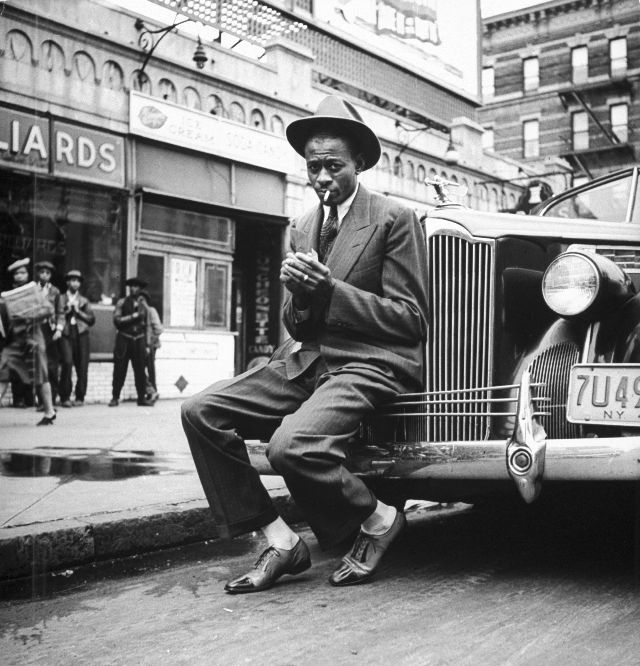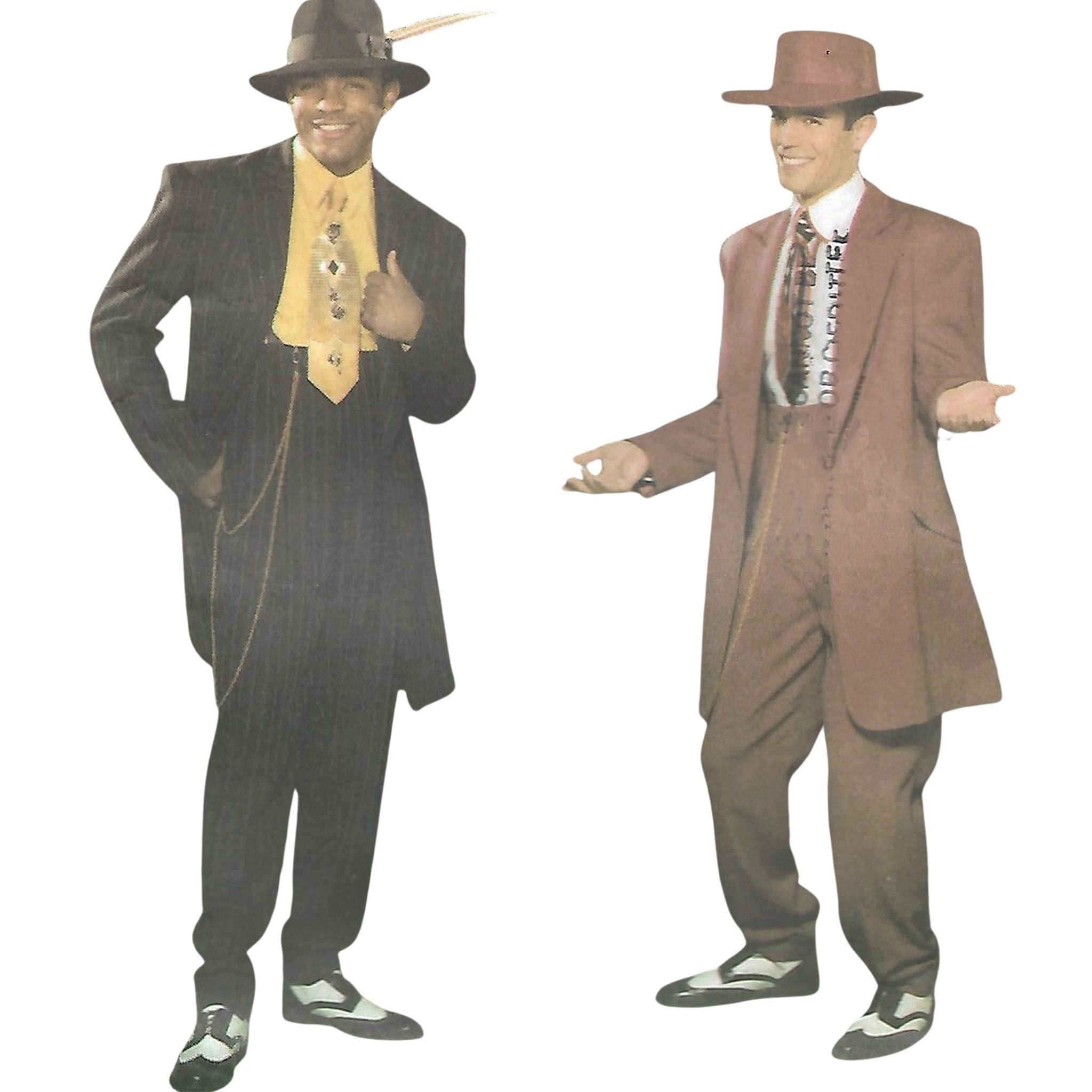

The Harlem Dandy is a cultural icon that embodies a unique fusion of fashion, identity, and social resistance. Emerging in the vibrant streets of Harlem, New York, during the early to mid-20th century, the Harlem Dandy represented more than just sartorial excellence; it was a movement that sought to redefine African American identity in a society steeped in racial inequality. The Harlem Dandy was a figure that used fashion as a means of self-expression, empowerment, and, ultimately, as a way to assert one’s dignity and worth in a world that often sought to deny them that right. This narrative delves into the historical context, the evolution of the Harlem Dandy, and the cultural legacy that continues to inspire new generations.
The Historical Context

To understand the Harlem Dandy, it is important to delve into the historical backdrop of Harlem and the socio-political dynamics that gave rise to this cultural phenomenon. The Great Migration, which began in the early 20th century, saw millions of African Americans leave the rural South for cities in the North, seeking better opportunities and escaping the harsh realities of segregation. Harlem, a neighborhood in Manhattan, became the epicenter of African American culture, a melting pot of music, art, literature, and political thought. This period, known as the Harlem Renaissance, was marked by an explosion of creativity and the rise of a new, self-assured Black identity.

In the midst of this flourishing cultural landscape, the Harlem Dandy emerged. Drawing inspiration from European fashion as well as traditional African aesthetics, the Harlem Dandy presented a striking and refined image that contrasted sharply with prevailing stereotypes about Black Americans. By adopting a sophisticated style, the Harlem Dandy sought to defy the societal norms that relegated African Americans to positions of servitude and poverty. Instead, they used clothing as a form of rebellion and as a means of communicating pride, dignity, and a demand for equality.
The Essence of the Harlem Dandy
The Harlem Dandy was characterized by a flair for the extravagant, a penchant for color, and a keen eye for tailoring. Sharp suits, vibrant colors, silk ties, and polished shoes were all part of the Harlem Dandy’s repertoire. Their clothing was not only a personal choice but also a statement that demanded attention. This attention was a form of resistance against a society that often rendered African Americans invisible or portrayed them in negative and dehumanizing ways.
Men like Herbert “Whitey” White and musicians such as Duke Ellington and Cab Calloway epitomized the Harlem Dandy style. These figures, through their sartorial choices, challenged the prevailing racial hierarchy and created an aspirational image that inspired others in the community. The Harlem Dandy drew from European aristocratic fashion but infused it with their own unique flair, creating a hybrid style that was distinctly their own.


The style of the Harlem Dandy was not limited to men. Women also embraced elements of the Dandy aesthetic, often wearing tailored suits, elegant hats, and accessories that conveyed sophistication and confidence. Women like Josephine Baker and other Harlem socialites used fashion as a way to navigate spaces of power, asserting their presence and demanding respect. The Harlem Dandy was about creating an image of success and upward mobility, a way of rewriting the narrative of what it meant to be Black in America.
Fashion as Resistance
For the Harlem Dandy, fashion was more than just clothing – it was a form of social and political resistance. The adoption of refined, luxurious clothing was a means of challenging the stereotypes that had long been used to justify the subjugation of African Americans. By dressing in a way that was typically associated with the upper echelons of society, the Harlem Dandy confronted the dominant narrative that sought to portray African Americans as inferior.


In the early 20th century, African Americans faced systemic racism that permeated every aspect of life. Segregation laws, disenfranchisement, and economic inequality were pervasive, and the Harlem Dandy used fashion to carve out a space of autonomy and self-definition. The act of dressing well was a declaration of dignity in the face of systemic oppression. It was a way of asserting one’s humanity and rejecting the limitations imposed by a racist society.

The zoot suit, in particular, became a powerful symbol of resistance during the 1940s. The oversized suit, with its exaggerated proportions, was a style adopted by many young African American and Latino men. It symbolized defiance against wartime fabric rationing and, more broadly, against societal expectations. The zoot suit riots of 1943, in which young men wearing the suits were attacked by servicemen, highlighted the tension between marginalized communities and the mainstream society that sought to suppress their expression.
Cultural Impact and Legacy
In contemporary fashion, designers like Dapper Dan have drawn inspiration from the Harlem Dandy tradition. Dapper Dan, a Harlem-based designer who rose to prominence in the 1980s, became known for his bold, luxurious designs that reimagined high-fashion labels with a distinctly Harlem twist. His work, which combined elements of luxury fashion with street style, pays homage to the legacy of the Harlem Dandy and its emphasis on individuality and self-expression.

The Harlem Dandy has also been immortalized in literature, music, and film. Writers like Langston Hughes and Zora Neale Hurston captured the essence of Harlem’s vibrant culture in their works, often depicting characters who embodied the elegance and resilience of the Harlem Dandy. The music of jazz legends such as Duke Ellington and Cab Calloway, who were themselves iconic Harlem Dandies, conveyed the sophistication and complexity of the Harlem cultural scene.
In recent years, films and television series have revisited the Harlem Renaissance and the figure of the Harlem Dandy, highlighting their cultural significance. Productions like *Harlem Nights* (1989) and *The Cotton Club* (1984) brought the glamour and style of Harlem’s golden era to the screen, showcasing the fashion and charisma that defined the Harlem Dandy. These portrayals have helped keep the legacy of the Harlem Dandy alive, introducing new audiences to the style and substance of this iconic figure.
A Lasting Influence
The Harlem Dandy represents more than just a fashion trend; it is a powerful symbol of resilience, creativity, and the pursuit of self-definition. The Dandy’s commitment to style was a way of asserting one’s humanity in a society that often sought to dehumanize. It was about taking control of one’s image and, by extension, one’s destiny. The Harlem Dandy showed that fashion could be a powerful tool for challenging stereotypes, expressing individuality, and demanding respect.


Today, the legacy of the Harlem Dandy continues to inspire artists, designers, and individuals who see fashion as a means of self-expression and empowerment. The emphasis on elegance, confidence, and defiance that defined the Harlem Dandy can still be seen in contemporary fashion and popular culture. Whether on the runways of Paris, the streets of Harlem, or the stages of hip-hop concerts, the spirit of the Harlem Dandy endures, reminding us of the power of style to transform not only how we are seen but also how we see ourselves.
The Harlem Dandy’s influence transcends fashion; it is a testament to the enduring power of culture as a force for change. By embracing style as a form of resistance and a means of self-empowerment, the Harlem Dandy left an indelible mark on history—a legacy that continues to inspire those who dare to challenge the status quo and redefine what it means to be unapologetically themselves.
